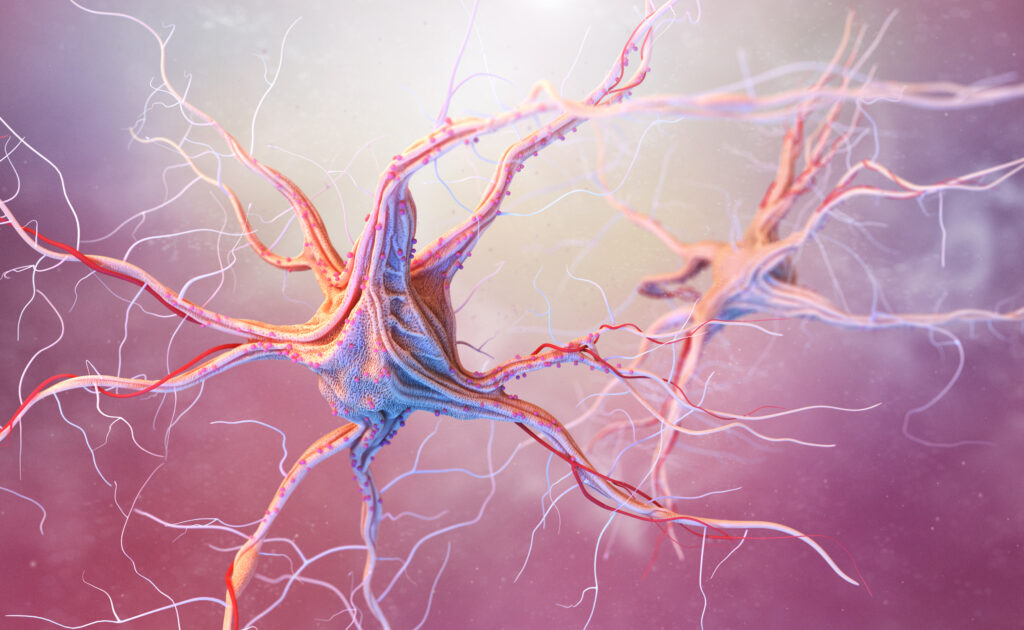
We’re all on a journey, looking for that spark that makes life feel complete, with happiness shining like a lighthouse in the distance. It’s something we all chase, but it’s tricky, layered, and deeply intertwined with how our minds tick. In this piece, we’re diving headfirst into what happiness really means, peeling back the layers to explore its roots in our psyche, social lives, and biology. It’s about understanding how feeling good about life is linked with our mental wellness. We’ll sift through wisdom from psychology, the wonders of the brain, and age-old wellness practices. Together, they paint a picture of how to live a life brimming with joy and resilience.

For so many of us, snagging happiness feels like grabbing at the ultimate prize in life, yet it’s as tricky and personal as it gets. It’s a blend of those moments that make us smile, the satisfaction of living a life we’re proud of, and the sweet taste of achieving what we’ve set our hearts on. Happiness doesn’t just let itself be easily pinned down; it’s joy, peace, and a profound sense of having made it. Then there’s well-being, which throws the net even wider. It’s not just about feeling good or being happy with your lot in life. Well-being digs deeper, exploring the full spectrum of what it means to live fully. It values being deeply involved in what we do, building meaningful connections, and chasing after what gives our lives purpose.
Unlike happiness, which can come and go like the wind, well-being is anchored in our mental health, built on a foundation of positive vibes, engaging fully in our passions, and having people around who matter to us. The Journal of Happiness Studies lays it out pretty clearly, pointing to two key angles: the hedonic, all about feeling good and satisfied with life, and the eudaimonic, which is more about our inner wellness and finding meaning. This distinction really highlights just how complex and layered happiness and well-being are, painting a picture of their rich and varied essence.
The chase for happiness is a timeless journey, weaving through different cultures and philosophical schools of thought, stretching back through history. Picture Aristotle, way back in the day, presenting his idea of eudaimonia—this concept that reaching our full potential is the key to true happiness. It’s a thought that has echoed through ages.
Then, take a stroll through the serene gardens of Eastern wisdom, where Buddhism and Taoism hold court. Here, happiness isn’t just a fleeting emotion but a deep-seated tranquility, a balance of the energy that flows through life. They teach the art of being fully present, of embracing the ever-changing dance of existence, as a path to joy.
Fast forward to today, and you’ll find psychology has taken up the torch with positive psychology leading the charge. This field isn’t just about cracking a smile; it’s about cultivating positive emotions and forging strong bonds with those around us to elevate our happiness levels. And let’s not forget the powerful role our surroundings play in shaping our well-being. The warmth of our connections, the quality of our social circles—they all stitch together to influence how happy we feel.
This dance between what’s inside us and the world around us keeps the quest for happiness alive, ever-evolving, and as fascinating as ever.
Diving into the world of modern psychology, it’s like happiness has found a new playground—positive psychology. This branch doesn’t just skim the surface; it digs deep into what makes us tick, aiming to polish those gems within us that sometimes get a bit dusty. With positive psychology, the goal is to not just go through life but to actually enjoy the journey, enhancing our innate strengths and virtues. It’s kind of like finding your inner superhero, with tools like mindfulness, jotting down things we’re grateful for, and learning to see the glass as half full.
Then there’s the Journal of Happiness Studies, a treasure trove for anyone fascinated by the different shades of joy. It’s not just about throwing around ideas; it’s about backing them up with solid research. This journal throws a spotlight on happiness, treating it not as a one-size-fits-all but as a complex puzzle made up of different pieces, influenced by everything around us and within us.
But here’s the kicker: happiness isn’t just about dodging life’s curveballs. It’s about embracing the good times, cherishing those moments of pure bliss, and finding a deeper sense of satisfaction in life. And let’s not forget the rich tapestry of cultures around the globe, each with its own unique take on what it means to be happy. It’s a reminder that joy doesn’t come in a single flavor but is as diverse as the world we live in.

We’re all chasing after happiness, right? But it turns out, it’s not a one-size-fits-all kind of deal. On one hand, you’ve got the hedonic way of looking at things—it’s all about soaking up as much pleasure as possible and steering clear of pain. Think of it as the instant gratification route, where it’s the quick, feel-good moments that count.
Then, there’s the eudaimonic perspective, which digs a bit deeper. It’s not just about basking in good vibes; it’s about leading a life that’s rich in meaning and virtue. This path is about personal growth, hitting your stride in self-actualization, and really tapping into your true potential.
To break it down:
Both paths have their place in the quest for happiness. The hedonic approach might give you those quick hits of joy, but the eudaimonic way offers something that sticks around—a profound, lasting fulfillment.
Ever think about why some folks seem to bounce back from anything with a smile, or why gratitude isn’t just about saying thank you? Well, cognitive theories of well-being dive into just that—how our thoughts and the way we see the world play a huge role in our happiness and how satisfied we feel with life. It’s like the glasses we wear to view life can tint our experiences in shades of optimism or gloom.
At the heart of these theories, there’s a spotlight on certain personality sparkles—optimism, resilience, and gratitude—that are like happiness magnets:
But wait, there’s more—mindfulness and finding your why in life are also big players. Mindfulness is about being fully present, soaking in the now without the stress of the past or future. And having a sense of purpose? It’s like having your personal compass, guiding you towards what feels meaningful and fulfilling.
Building on the ideas of thinkers like Ryff, and then Ryan and Deci, well-being is this rich, multi-layered tapestry. It’s not just about chasing happy moments but living fully, nurturing meaningful connections, and achieving things that make us puff our chests out with pride. It’s a complex recipe for mental health, but oh, so worth it.
Imagine life as a dance, with our genes and everything around us moving in sync, influencing how light or heavy our steps feel. It’s this unique combination of the music written in our DNA and the stage set by our environment that shapes how easily we find ourselves tapping along to the tune of happiness.
This journey towards happiness? It’s far from a solo performance. It’s a group number, with the emotions of those around us influencing our own steps, sometimes leading us in unexpected directions.
And getting to know ourselves, understanding the quirks of our own temperaments through tools like the Temperament and Character Inventory, can shed light on how we dance through life. It helps us see the underlying melodies of our personalities and how they play into this grand performance of happiness.

The dance between happiness and mental health is something psychologists have been turning over in their minds for years. It’s like happiness and health are two peas in a pod, tied together so tightly that when one jumps, the other is likely to follow. Feeling good in your skin often means you’re more likely to have a spring in your step, and having that lightness of being can actually help you stay healthier.
This back-and-forth between what we need emotionally and the satisfaction we get from our relationships plays a big part in our mental health landscape.
Acknowledging how tightly knit mental health and happiness are reminds us that it’s not just about dodging the rain clouds of illness. It’s about soaking up the sunshine of positive vibes and building bridges to meaningful connections.
It feels like stress has become a shadow following us around, doesn’t it? This unwelcome companion brings along friends like hypertension and depression, turning life into a more challenging journey. Getting to know the early whispers of stress and stepping up to manage it is more than just self-care; it’s essential for keeping our mental garden blooming with happiness.
Hanging onto negative emotions, letting them set up camp in our minds, can slowly chip away at our joy and dim the colors of our life. It’s vital to remember that our mental state and happiness are closely knit, sharing the same space, and chronic stress acts like a storm cloud over this landscape.
But here’s a beacon of light: embracing positivity, gratitude, and joy. These aren’t just feel-good words; they’re powerful tools that shield our mental well-being from the hail of stress and negativity.
So, how do we stand strong against the tide of chronic stress? Here’s a battle plan:
Happiness in mental health care shouldn’t be a footnote—it deserves top billing. Imagine weaving happiness into the very fabric of mental health treatment, tackling not just the symptoms but the roots of mental distress. It’s about giving people the tools to grow their happiness right alongside their mental well-being.
This all-encompassing strategy acknowledges how intertwined happiness and mental health really are. It’s an invitation to close the gap that often exists between classic therapy and the quest for joy, embracing a fuller, more connected way of healing.
Getting to grips with this intricate relationship lights the way for us to place our mental health and happiness at the forefront of our lives. Whether it’s reaching out for professional guidance, making self-care a priority, or building our emotional armor, these steps are about watering the garden of our mental landscape, encouraging happiness to bloom in tandem.
Diving into the toolbox, we find:
These approaches have proven their worth, shining as beacons of hope for enhancing happiness and resilience. They offer a mosaic of options for fostering mental health and happiness in people from all walks of life.

It seems like we’ve embarked on an epic journey, diving deep into the brain’s intricate network, in search of what makes us feel truly happy. Picture the brain as a grand conductor, with neurotransmitters like dopamine and serotonin as the lead musicians in the orchestra of our emotions, playing the tunes of joy and contentment.
Researchers are tuning into this concert, keen on unraveling how these chemical messengers waltz together, influencing how we feel from moment to moment. It’s not just about satisfying curiosity; this quest has a heartbeat. Understanding the dance of neurotransmitters opens up new possibilities for mental health care, guiding us towards therapies that can turn the volume up on happiness and dial down the darkness of depression and anxiety.
Imagine our brains as bustling cities, with neurotransmitters as the diligent messengers darting through the streets. These tiny chemical couriers are crucial in painting the colors of our emotions, from the calm blues of contentment to the vibrant yellows of joy. Serotonin and dopamine are like the VIPs in this bustling metropolis of our minds, each playing a crucial role in our emotional well-being.
Serotonin, often hailed as the ‘happiness chemical,’ acts as a mood stabilizer, fostering a sense of peace and satisfaction. Dopamine, in contrast, is the spark behind our smiles and the drive for our desires, fueling our quests for pleasure and reward. The harmony between these neurotransmitters is key to keeping our emotional world balanced.
This delicate balance can be swayed by our lifestyle choices—what we eat, how much we move, and the stress we carry. Creating a nurturing environment for these chemical messengers means we can dial up our happiness and bolster our overall emotional health.
Diving into this intricate relationship offers us new avenues to explore in mental health care, highlighting the power of a holistic approach that marries the psychological with the biological. It’s a reminder that our well-being is a symphony, requiring both the body and mind to play in tune.
Diving into the world of happiness science, it’s like unlocking a treasure chest filled with insights about what makes us tick. At the heart of this exploration lies the distinction between psychological well-being and happiness—a key that can help us understand the full picture of mental health.
Picture psychological well-being as a grand, sprawling garden, where happiness is just one of the many flowers blooming. This garden is vast and varied, featuring not just blooms of joy but also paths of engagement, fountains of relationships, and benches where we sit and ponder the meaning of life. It’s about more than just feeling good; it’s about thriving, connecting, and finding purpose.
Happiness, with its warm, sunlit spots, might draw us in, but it’s just a part of the larger landscape. It’s tied to the pleasures and positive moments—the hedonic aspect of our mental garden. Yet, the true essence of psychological well-being stretches out into every corner, touching on deeper, richer soil where we cultivate positive emotions, immerse ourselves in what we do, nourish our relationships, seek out meaning, and celebrate our achievements.
To really grasp what makes up psychological well-being, think about:
These elements weave together to form a robust and vibrant garden of psychological well-being, far beyond the fleeting flutter of happiness.

Think of holistic wellness practices as the art of maintaining your personal ecosystem. It’s not just about keeping your body fit; it’s about tending to the garden of your mind, heart, and spirit, especially when the world feels like a whirlwind of stress and uncertainty. These practices invite us to care for ourselves in a way that touches every part of our being—mental, emotional, and spiritual—beyond just the physical.
Embarking on this holistic journey involves:
By weaving these practices into the fabric of our daily lives, we lay down a resilient foundation for our happiness and mental health. This integrated approach is like a bridge connecting the wisdom of traditional therapies with the pursuit of joy, guiding us toward a state of joy, resilience, and the realization of our fullest potential.
Embracing this path is a transformative expedition, one where happiness isn’t just a destination but a way of traveling. It’s a commitment to cultivating positive connections, championing policies that foster happiness, and shaping spaces that encourage holistic growth. It’s about flourishing in every sense of the word.
Resilience is so much more than just getting back on your feet after a fall; it’s about growing, evolving, and finding sparks of joy even when the path gets rocky. Think of building resilience as constructing a robust emotional support network around you, one that acts like a safety net when life tosses you into the air. Tapping into stress-busting activities and viewing hurdles as stepping stones for personal development are key pieces of this puzzle.
As we sharpen these resilience skills, we navigate through life’s ups and downs with more grace, emerging not just unscathed but enriched, carrying wisdom, happiness, and a deeper sense of fulfillment.
Embracing positivity, wrapping ourselves in self-compassion, ditching the inner critic, and cultivating an attitude of gratitude transforms the ordinary into the extraordinary. It’s about seeing the beauty in the now and embracing life’s simplicity with open arms. Making these practices part of our everyday life is like laying down roots for enduring happiness.
So, let’s:
These stories of resilience and joy teach us that happiness isn’t just a distant dream but a reality within our grasp, even when obstacles loom large. By tapping into our inner strength, reflecting on our journey, and leaning on each other, we pave our way to a life that’s not just about surviving but thriving.
Diving into the realm of mental health, therapeutic interventions stand out as beacons of hope, guiding us toward happiness and a sound mind. Through the avenues of psychotherapy, counseling, and proven therapeutic methods, individuals are armed with the tools they need to face mental health challenges head-on while carving out paths to happiness.
Positive psychology casts a spotlight on the power of positive emotions, gratitude, deep connections, and finding one’s purpose. When these elements weave their way into the fabric of our everyday lives, they don’t just add color; they set the whole canvas alight with personal growth and joy.
This holistic approach doesn’t just place happiness and mental health side by side; it seeks to blend them, marrying traditional therapies with the pursuit of joy and the realization of our true potential.
The strategies for personal happiness aren’t just lofty ideals; they’re concrete steps we can all take towards crafting a life that’s not only satisfying but deeply fulfilling. Embracing a positive outlook, prioritizing self-care, setting meaningful goals, and indulging in activities that bring us joy—these are the keys to unlocking a richer, more vibrant life.
The ripple effects of these interventions are vast, touching everything from mental health advocacy to the very policies that shape our approach to psychological well-being. Standing at the forefront are:
Proven to enhance happiness and build resilience, these methods offer bright prospects for boosting mental health across all walks of life, illuminating diverse paths to well-being.
As we wrap up our journey through the science of happiness, it’s clear we’ve been traversing a rich landscape at the crossroads of psychology, neuroscience, and holistic wellness. This exploration has illuminated the deep ties between our sense of joy and overall mental health, spotlighting the power of positive emotions, meaningful engagement, and the warmth of connections in nurturing our well-being.
Shadows like chronic stress and mental hurdles can dim our happiness, but the drive towards a life brimming with fulfillment is a path many of us walk together. Armed with insights into the brain’s blueprint for happiness and the psychological foundations of well-being, we’re better prepared to face life’s twists and turns with a resilient smile.
As we peel back layer after layer of happiness’s mysteries, we’re not just expanding our knowledge; we’re laying the groundwork for smarter, more empathetic approaches to mental health care. It’s a journey that deepens our appreciation for the delicate art of living well, encouraging us to embrace each day with a heart full of joy.
The quest to understand what makes us truly happy takes us through a fascinating blend of psychology, social dynamics, and the biology that hums beneath our skin. This journey into the science of happiness uncovers the myriad elements that shape our inner sense of joy and fulfillment. It’s like peeling back the layers to reveal how feeling good about ourselves and our lives can be a balm for the mind, cutting through stress, weaving resilience, and painting our mental health with brighter strokes.
In this light, happiness isn’t just an ephemeral cloud that drifts into our lives by chance; it’s a state of being that nurtures our mental garden, encouraging flowers of well-being to bloom even amidst life’s inevitable storms.
It turns out, the elusive feeling of happiness isn’t as intangible as we might think. Scientists have actually figured out ways to pin it down, measure it, and even categorize it through a mix of self-reported surveys, psychological tests, and even clues hidden within our biology. It’s like having a happiness thermometer that tells us how warm or cool we’re feeling on the inside.
Journals like The Journal of Happiness Studies dive deep into this topic, unraveling the threads of what makes us feel good. They look at happiness from two angles: the joy we find in life’s pleasures, known as hedonic well-being, and the fulfillment we get from a life of purpose and meaning, or eudaimonic well-being. It’s fascinating to see how our happiness can be mapped out, offering insights into the rich tapestry of human well-being.
It seems like our personal recipe for happiness isn’t just about what we do or the experiences we have; it’s also baked into who we are. Think of personality traits like optimism and extroversion as ingredients that can sweeten our happiness, making some of us naturally more inclined to sip on the brighter side of life. And then, there’s our genetic makeup, the family recipe passed down through generations, which shapes how we taste the world around us, influencing our happiness and overall well-being. It’s like discovering the flavors of our personal happiness are part heritage, part personality, and altogether fascinating.
Dopamine and serotonin are like the brain’s dynamic duo, working behind the scenes to choreograph our emotional experiences. These neurotransmitters play lead roles on the stage of our minds, directing the flow of our feelings and the rhythm of our well-being. They pull the strings of our brain’s reward system and mood regulation, essentially deciding when we feel the buzz of pleasure or the warmth of happiness. Neuroscience has thrown open the curtains on this show, allowing us to peek at the biological scripts that underpin our happiness, reminding us that sometimes, what we feel is deeply rooted in the chemistry of our brains.
Imagine holistic wellness as a toolbox for crafting a happier, more balanced life. Mindfulness, exercise, and a well-rounded diet are some of the key tools at our disposal. They do more than just keep us physically fit; they act as stress busters, peace bringers, and joy finders, helping us cultivate a sense of harmony within ourselves. These practices aren’t just activities; they’re stepping stones to resilience, empowering us to discover moments of joy, even when the going gets tough. It’s about finding light in the darkness, strength in vulnerability, and happiness in the journey, not just the destination.
Think of psychological well-being as a lush, expansive garden where happiness is just one of the many flowers blooming. It’s a place that’s not only about the vibrant colors of joy but also about the rich soil of positive emotions, the sunlight of engagement, the water of meaningful relationships, and the care of finding one’s purpose. This garden is more than just a pretty view; it’s a thriving ecosystem where feeling good meets doing good, where every day is an opportunity to live deeply, meaningfully, and fully. It’s about crafting a life that’s as rewarding to navigate as it is to simply exist in.
